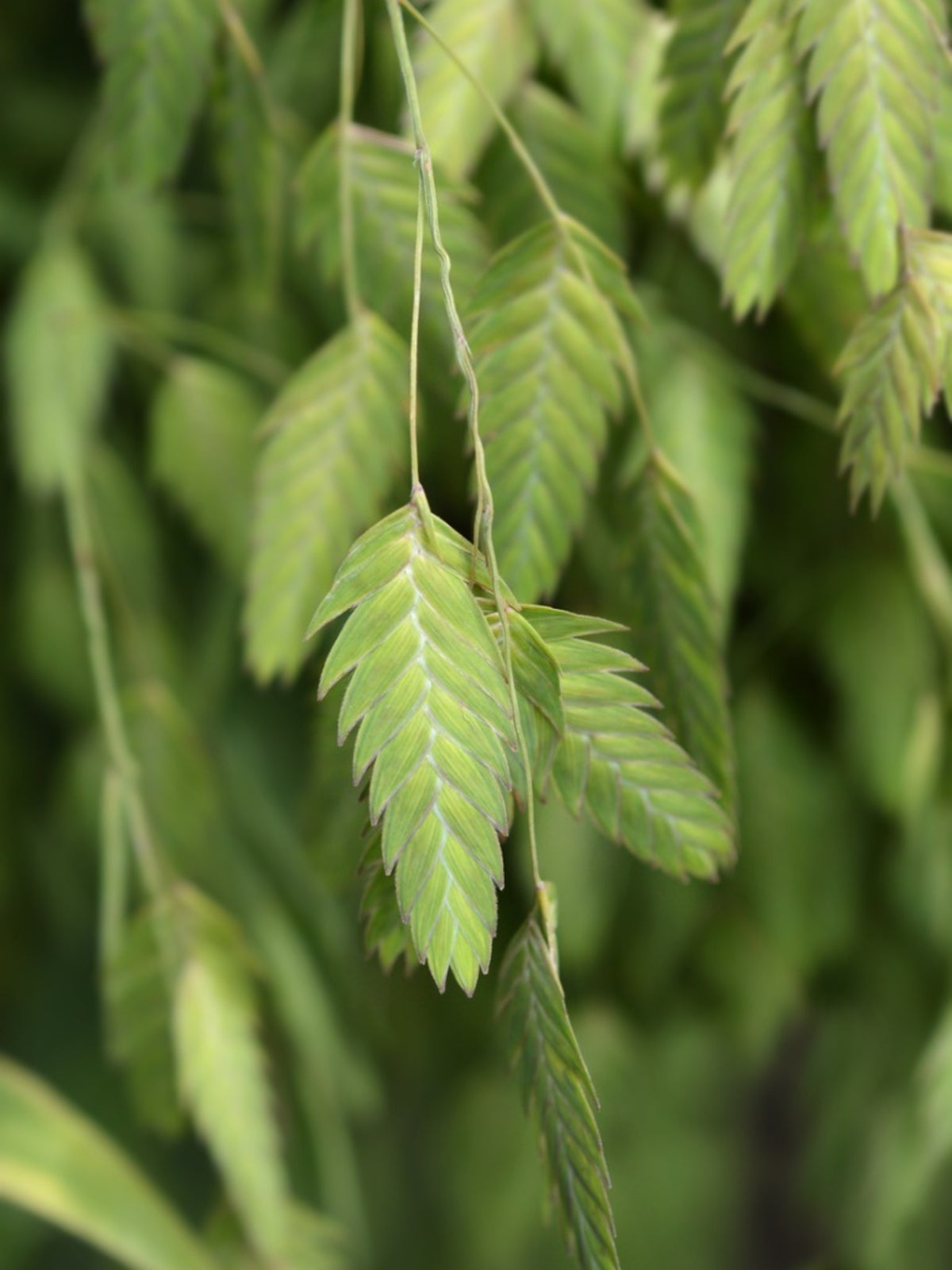Northern Sea Oats Grass - How To Plant Northern Sea Oats


Northern sea oats (Chasmanthium latifolium) is a perennial ornamental grass with interesting flat foliage and unique seed heads. The plant provides several seasons of interest and is a good landscape plant for USDA zones 5 to 8. Northern sea oats decorative grass is native to south and eastern parts of the United States from Texas to Pennsylvania. The plant's name refers to the spikelets that hang from the plant and resemble oat seed heads. The different forms of the grass make growing northern sea oats grass in the garden an excellent choice.
Northern Sea Oats in the Garden
Northern sea oats decorative grass is a versatile plant that performs equally well in sun or shade. The grass is loosely tufted and forms a clump. The leaves are dark green, long, and slightly pointed at the end, resembling bamboo leaves. The real attraction is the flower's seed head, which is a wide, flat construction whose texture resembles wheat heads. The flowers are dangling panicles and the foliage turns a rich bronze in fall. The seed heads arrive in summer and persist for three seasons. They are often used as part of cut flower arrangements. The seed heads start out a medium green and age to a light tan color. Use of northern sea oats in the garden tends to fill large areas when planted in mass and form a swath of motion that enlivens the landscape. You need to consider the invasive nature of the plant, which grows from rhizomes and seeds readily. The self-sowing nature can cause numerous seedlings and make the grass a nuisance. Cut the seed heads off to prevent spreading and bring them indoors for use in dried floral arrangements. The foliage should be sheared back in late winter to make way for the new spring growth.
How to Plant Northern Sea Oats
Northern sea oats grass is a warm-season grass that spreads through rhizomes. Its hardiness zone can be extended to USDA zone 4 with heavy mulching and if planted in a protected location. The plant can tolerate very dry conditions or moist soils that are well drained. Plant northern sea oats in a location where you need a 3 to 5 foot (1-1.5 m.) tall plant with a similar spread and a drought tolerant specimen. When grown in a shady location the plant is greener and taller, but it still produces flowers and seed heads.
How to Grow Northern Sea Oats
The site and moisture adaptability is not the only attribute to planting northern sea oats. It is also tolerant of sea spray and can be grown on coastal areas. Create rich, organically amended soil for planting northern sea oats. Rich, well drained soil in sun is the best situation for how to grow northern sea oats. The grass is native to wooded slopes and creek bottoms where soils are rich from organic deposits and natural compost. Mimic the natural habitat of any plant you are growing for a successful cultivation. The plant can easily be cultivated by division of the rhizomes in fall or early spring.
Gardening tips, videos, info and more delivered right to your inbox!
Sign up for the Gardening Know How newsletter today and receive a free copy of our e-book "How to Grow Delicious Tomatoes".

Bonnie Grant is a professional landscaper with a Certification in Urban Gardening. She has been gardening and writing for 15 years. A former professional chef, she has a passion for edible landscaping.
-
 Looking For Plants To Give You The Soft And Fuzzies? Try These 5 Fuzzy Leaf Plant Options
Looking For Plants To Give You The Soft And Fuzzies? Try These 5 Fuzzy Leaf Plant OptionsLovers of texture, drama, silver foliage and tactile plants will adore these special sensory garden additions. These fuzzy leaf plant options will leave you all aglow
By Susan Albert
-
 Get Ready For A Summer Of Hummers! Grow These Full Sun Hummingbird Plants and Flowers
Get Ready For A Summer Of Hummers! Grow These Full Sun Hummingbird Plants and FlowersIf you’re lucky enough to enjoy a sunny backyard, make sure you are maxing out on your pollinator opportunities and grow these full sun hummingbird plants and flowers
By Tonya Barnett